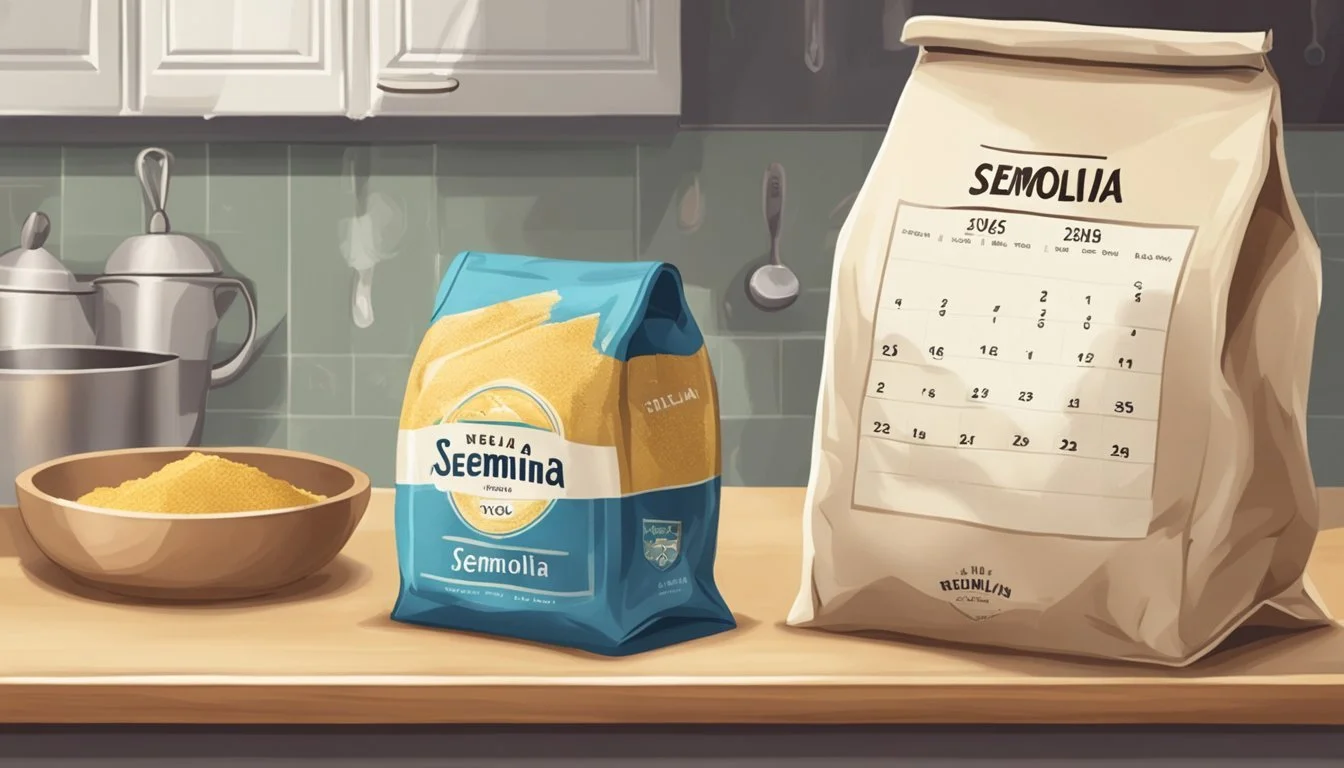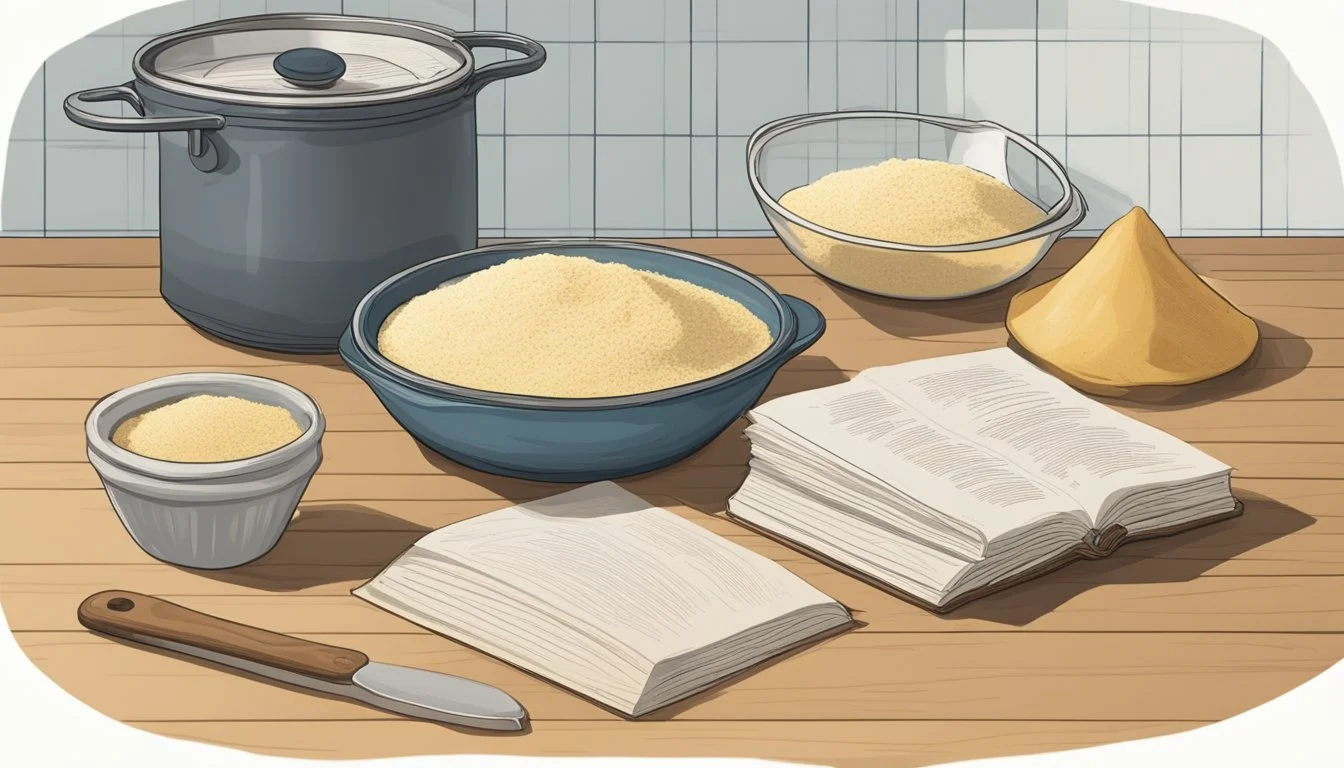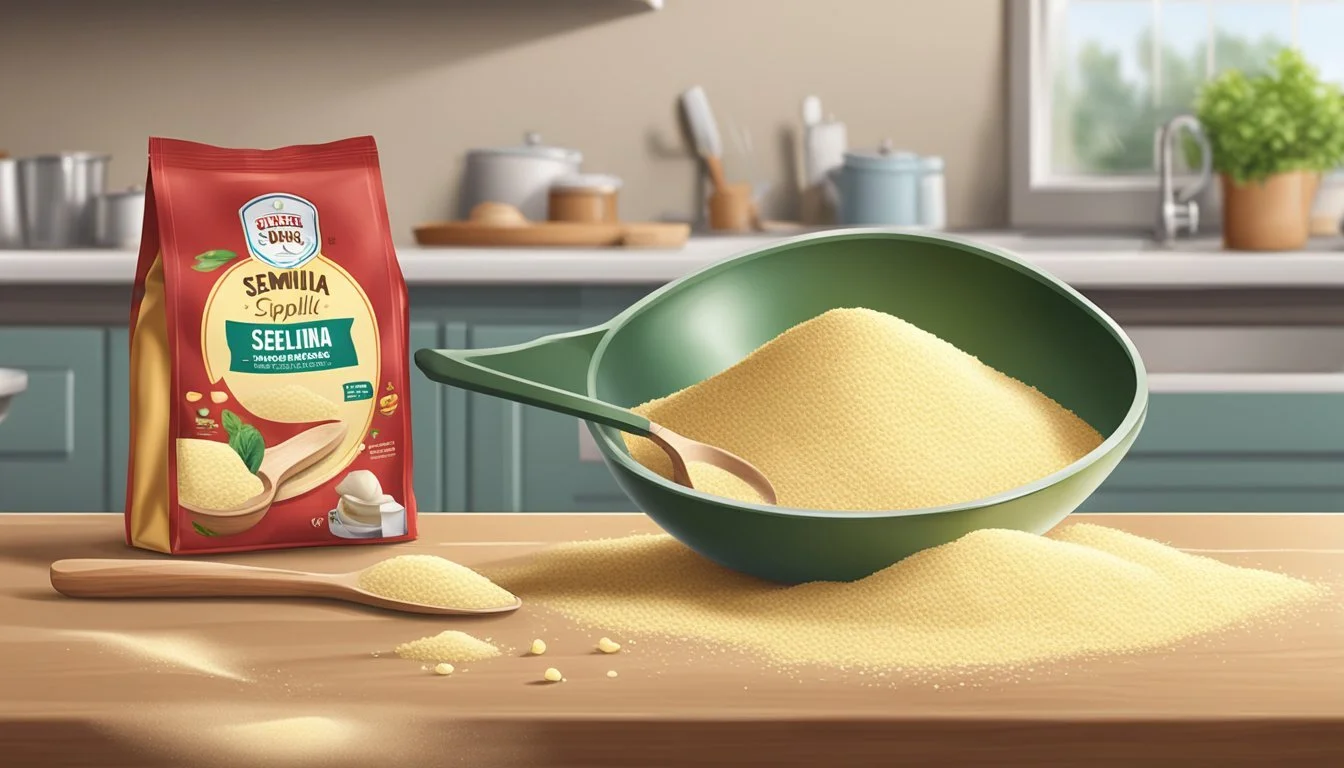Does Semolina Go Bad?
Understanding Shelf Life and Storage
Yes, semolina does go bad. The shelf life of semolina largely depends on how it is stored and whether the packaging has been opened or not. When stored in optimal conditions, semolina flour can last 6-8 months at room temperature if unopened, and up to 2 years if kept in the freezer.
Quality and spoilage are key factors to consider. Opened packages of semolina stored at room temperature typically last only 2-4 months. Rancid flour will exhibit unpleasant odors and a stale or bitter taste, indicative of spoilage. Additionally, changes in color from its natural pale yellow to brown suggest oxidation and loss of quality.
Proper storage can significantly extend the shelf life of semolina. Keeping the flour in a cool, dry place, away from direct sunlight and heat sources, helps maintain its quality. Sealed containers are recommended to prevent moisture and pests, ensuring the flour remains usable for as long as possible.
Understanding Semolina
Semolina, made from durum wheat, is a high-protein and versatile ingredient commonly used in various cuisines. It offers unique nutritional benefits and can be compared with other types of flour regarding its uses and properties.
Defining Semolina
Semolina is coarsely ground durum wheat flour. Durum wheat is a hard variety of wheat known for its high protein content. This characteristic makes semolina ideal for making pasta, as it holds its shape well during cooking. It is distinguishable by its yellow color and slightly nutty flavor.
It is important to note that semolina is different from durum wheat flour which is a finer grind. The processing method removes the bran and germ, resulting in a product largely composed of the wheat endosperm.
Semolina Uses in Cooking
Semolina is widely used in cooking and baking. In pasta production, it is the preferred flour due to its strong gluten network, which gives pasta its chewy texture. Besides pasta, semolina is used in recipes for bread, pizza dough, and other baked goods because of its unique texture.
In desserts, semolina is often used in traditional recipes such as halva, a Middle Eastern treat. Additionally, it can be used to make couscous and polenta, both versatile dishes that can serve as sides or main courses.
Nutritional Profile
Semolina flour has a rich nutritional profile. It is high in protein, which is essential for muscle repair and growth. In addition, semolina contains significant amounts of dietary fiber, promoting digestive health.
It is a good source of B vitamins, such as folate and thiamine, which are vital for energy metabolism. Semolina also provides minerals like iron and magnesium, which play crucial roles in oxygen transport and bone health, respectively.
Comparing Semolina With Other Flours
When compared to other flours like all-purpose, whole wheat, and cornmeal, semolina stands out due to its high protein content and coarse texture. Bread flour, which is also high in protein, has a finer texture than semolina and is used mainly in yeast breads.
Whole wheat flour includes the bran and germ, making it higher in fiber and nutrients than semolina. Cornmeal is another coarse flour, but it is gluten-free, making it a good option for those with gluten sensitivities. Each type of flour has unique properties that suit different culinary uses.
By understanding what semolina is, its uses, nutritional benefits, and how it compares to other flours, one can better appreciate its value in the kitchen and incorporate it into a healthy diet. Semolina's versatility and nutritional benefits make it a staple ingredient in many households.
Identifying Fresh and Spoiled Semolina
Semolina can be distinguished as fresh or spoiled by considering its smell, color, texture, and potential for contamination.
Signs of Freshness
Fresh semolina flour typically has a slightly nutty or earthy aroma. The color is a consistent pale or golden yellow, indicative of its quality. The texture should be fine, with no clumping that might suggest moisture has entered the packaging.
Fresh semolina has a mild, slightly sweet taste. An unopened package stored at room temperature generally lasts about 6-8 months, while refrigeration can extend this period to 8-12 months. When stored in a freezer, semolina can remain viable for up to two years.
Proper storage away from moisture and contaminants helps maintain its quality. It's important to check for signs of insects and pests, as these are common issues in grain products.
Indicators of Spoilage
Spoiled semolina flour often emits a sour, musty, or otherwise unpleasant odor. This off-odor is a clear indication of spoilage. The color may darken or turn brown, reflecting oxidation or the presence of mold. Texture changes, such as clumping, can be a sign that the flour has absorbed moisture.
Mold growth or insect infestation can also indicate spoilage. Eating spoiled semolina may lead to food poisoning. Changes in flavor, such as a bitter or stale taste, signify that the flour has deteriorated.
Rancid semolina should be discarded immediately to avoid any adverse health effects. Regularly checking for these signs can help ensure the flour remains fresh and safe to use.
Storing Semolina Flour Properly
Proper storage of semolina flour ensures its freshness and extends its shelf life. Key practices include keeping it in a cool, dry place, using airtight containers, and avoiding exposure to moisture and direct sunlight.
Ideal Storage Conditions
Semolina flour should be stored in a cool, dry, and dark place to prevent spoilage. Light and heat can accelerate the degradation process. To maintain quality, avoid placing the flour near windows, stoves, or any heat-producing appliances. Airtight containers are crucial as they protect the flour from moisture absorption and pests. These containers help maintain the flour's texture and nutritional value.
Tips for Extending Shelf Life
Using dry spoons and measuring cups ensures no moisture is introduced into the semolina flour. This practice prevents clumping and spoilage. Avoid moisture sources such as sinks and dishwashers when handling the flour. Labeling the containers with purchase dates can help keep track of the flour's freshness. Regularly check for signs of spoilage like changes in color or odor, which indicate the flour should not be used.
Freezing Semolina for Long-Term Storage
For extended storage, consider freezing semolina flour. Freezing can significantly extend the shelf life, allowing it to last up to 2 years. Ensure the flour is in an airtight container or freezer bag to protect it from moisture and freezer burn. Refrigeration can also be an option, with a shelf life of 8-12 months. When ready to use, allow the flour to come to room temperature to restore optimal texture and functionality.
Practical Uses of Semolina in Cooking
Semolina, known for its coarse texture and high protein content, is an essential ingredient in a variety of culinary applications. It adds a unique texture to bakery products and is integral in making fresh pasta, pizza dough, and delightful desserts.
Semolina in Traditional Baking
Semolina is prized in traditional baking for its ability to create breads with a strong, chewy texture. Used in varying proportions, it imparts a nutty flavor and a distinct golden hue to baked goods.
In bakery settings, semolina is often mixed with all-purpose flour to enhance the performance of the dough. Rye and semolina breads are popular for their dense, hearty crumb. Furthermore, semolina is excellent for dusting surfaces, ensuring dough doesn't stick and providing a nice crust.
Creating Fresh Pasta and Pizza Dough
Semolina's high protein content makes it ideal for crafting pasta and pizza dough. Its coarse texture allows for a robust dough that holds together well.
When making pasta, semolina helps produce a strong and chewy texture preferred in traditional Italian recipes. Its use in pizza dough enhances the dough's performance, enabling it to stretch thin without breaking. Fresh pasta made from semolina flour boasts a rich flavor and works beautifully for shapes like fettuccine, pappardelle, and gnocchi.
Crafting Delightful Desserts and Other Dishes
Semolina shines in desserts such as cakes, puddings, and confections. Its ability to absorb liquids while maintaining structure makes it versatile.
Semolina is a key component in Mediterranean desserts like basbousa and semolina cake. It also serves as the base for dishes like couscous, which is known for its wonderful texture and adaptability in both savory and sweet preparations. Desserts leveraging semolina benefit from its nutty flavor and dense consistency, offering a satisfying bite with each spoonful.
By incorporating semolina into these various culinary applications, cooks can capitalize on its unique properties to create dishes with unparalleled taste and texture.
Health Benefits and Considerations
Semolina flour offers various health benefits, including its rich nutritional profile, suitability for weight management, and some considerations for those with specific dietary restrictions or allergies.
Nutritional Advantages
Semolina is a nutritious flour made from ground durum wheat. It is high in protein, providing about 5.3 grams per quarter-cup serving. This makes it an excellent ingredient for those looking to increase protein intake. Additionally, semolina is a good source of dietary fiber, which aids in digestive health and can help regulate blood sugar levels.
The flour is enriched with several essential vitamins and minerals, such as iron, which is crucial for preventing anemia. It also contains significant amounts of B vitamins, particularly niacin, which support metabolism and overall energy levels.
Diet and Weight Management
Semolina can be a valuable addition to a diet focused on weight management due to its high protein and fiber content. These nutrients promote a feeling of fullness, potentially reducing overall calorie intake. Foods made with semolina can help provide sustained energy and keep hunger at bay between meals.
For those in weight management programs, incorporating semolina into meals can aid in maintaining a balanced and nutritious diet. The fiber content also supports digestive health, which is essential for effective weight management.
Allergies and Dietary Restrictions
While semolina has many health benefits, it is important to note that it contains gluten, a protein that can be harmful to individuals with celiac disease or gluten sensitivity. This makes semolina unsuitable for people who require a gluten-free diet. Additionally, some individuals may have a wheat allergy, which also necessitates avoiding semolina and opting for alternative grains.
To accommodate those with gluten or wheat-related dietary restrictions, alternatives such as rice flour, quinoa flour, and corn flour are available. These substitutes can provide a similar texture and nutritional benefits without the adverse effects associated with gluten.




